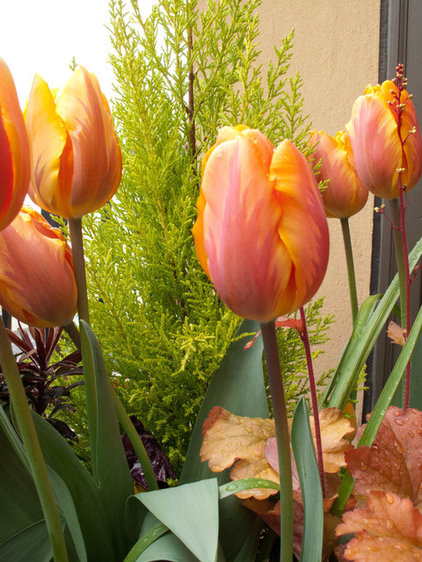Windows have a huge impact on how our homes look, feel and function, so we want to get them right. But even the best windows have a hard time doing everything we want them to do — let in light and views, keep out the cold, etc. Happily, homeowners can make their windows perform better by choosing energy-efficient window treatments such as insulated curtains and blinds.
You can find some great solutions for how to make windows more energy-efficient — and your home more comfortable — without spending a lot of money. You can even make some insulated window coverings yourself.
Out the Window
Windows are often described as “holes in the wall” for good reason. The U.S. Department of Energy (DOE) reports that windows typically account for 25 percent of annual heating and cooling costs in older houses, and can even be responsible for as much as 40 percent.
Even those of us whose homes have high-performance windows want them to work better. “It doesn’t matter whether you get the best window in the world. The first thing that anybody is going to do is change the way it works,” says Peter Yost, vice president for technical services at the publisher BuildingGreen. These changes take place with the addition of blinds, insulated shades, thermal curtains or other coverings.
So how do we make window treatments work for us, and still be efficient? To get the most out of our windows, we need them to be adjustable. Depending on the season and time of day, we may want to let in as much light, heat, fresh air and view as possible — or do our best to keep those things out — in the name of comfort, energy efficiency and privacy.
Check the Payback on New Windows
Replacement windows are easy to get excited about because they offer efficiency features that can lower your energy bills. However, many green-building professionals agree that replacement windows are usually not an effective way to spend your money. Less expensive energy-efficient window treatments — such as plastic sheeting and thermal curtains — are often better bets. “If you have decent windows now, does it pay to replace them? No. They’re not going to pay you back in energy savings,” says Ken Riead, a home-energy rater and trainer with Hathmore Technologies in Independence, Mo.
The easiest way to find out whether you have efficient windows is to have a home energy audit. For a few hundred dollars — a fraction of the price of installing new windows, new wall insulation, or even a new heating and cooling system — a home energy professional will come to your residence to evaluate which options are a good deal by calculating the energy saved and the payback period. Specifically regarding windows, a home energy audit will assess whether your best investment would be new windows, storm windows, or additional weatherstripping and caulking. (Get the full scoop at Home Energy Audits: Measure Your Energy Costs and Add Up the Savings.)
Regardless of whether you end up replacing your existing windows, you should look into ways of improving their performance. With the exception of storm windows, recommendations about energy-efficient window treatments (cellular shades, thermal panels, awnings, etc.) are probably beyond the scope of a home energy audit, so you’ll need to do some further research. Luckily, much of the legwork has been done for you.
A good starting place is the “Weighing Your Window Options” chart (See also in Image Gallery). As you can see, no single energy-efficient window treatment will work for everyone. You may think the hands-down best choice is insulated cellular shades — because the chart shows they have one of the highest possible insulation values — but cellular shades have poor resistance to condensation, which can be a serious issue in cold, wet climates. Indeed, any window covers that allow warm, moist interior air to come into contact with cold glass will cause water droplets to form — risking rot and mold on wooden window frames. Homeowners can stop condensation from forming by creating a vapor barrier that prevents moisture from reaching the glass’s cold surface. A window quilt (that is, an insulated shade) made of airtight material will do the job nicely as long as the edge of the quilt is sealed to the window frame using bottom weights, magnetic tape, Velcro strips, or snaps and hooks. High-insulating window quilts are an easy do-it-yourself project — but maybe you’d prefer energy-efficient curtains that don’t block the view, ventilation and daylight. Exterior storm windows let you enjoy both the light and view, but they don’t resist condensation — and they’re not cheap. Old-fashioned homemade curtains are easy to pull aside and they’re quite affordable, but they provide negligible insulation value. Be sure you weigh the pros and cons before making your choice.
Before you start sewing insulated curtains or budgeting to buy storm windows, compare a range of energy-efficient window treatments at Window Coverings and Attachments, a joint project of BuildingGreen, Lawrence Berkeley National Laboratory and the DOE. The website is pretty slick: The tool makes suggestions based partly on the climate and location selected by the user. For example, in cold northern climates, moisture condensation issues need special attention, and the wrong type of window covers can do permanent damage. To avoid problems, you should look at window treatments rated highly for condensation resistance, and if you indicate that you live in a northern climate, the tool will automatically default to those options. You can also narrow the search by your preferences. If you’re only interested in products that will provide shade in summer, the selection tool will direct you to those types of window covers. And it provides information on warranties to help you choose energy-efficient window treatments that are also durable














